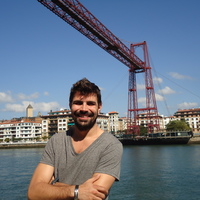Cited By
View all- Yang SHou MFan H(2024)CityGML Grotto ADE for modelling niches in 3D with semantic informationHeritage Science10.1186/s40494-024-01260-y12:1Online publication date: 1-May-2024
- Hidalgo-Sánchez FMerino-del-Río RMascort-Albea ERuiz-Moreno ILinares-GómezDelPulgar MTejedor-Cabrera A(2024)Digital reactivation of territories through geospatial cultural itineraries: the VIDA-HTL web applicationHeritage Science10.1186/s40494-024-01173-w12:1Online publication date: 16-Feb-2024
- Hidalgo-Sánchez FTorres-González MMascort-Albea ECanivell JRomero-Hernández RMartín-del-Río J(2023)NDT spatial data integration for monumental buildings: technical information management for the Royal Alcazar of SevilleBuilding Research & Information10.1080/09613218.2022.216247651:6(625-647)Online publication date: 2-Feb-2023
- Show More Cited By


